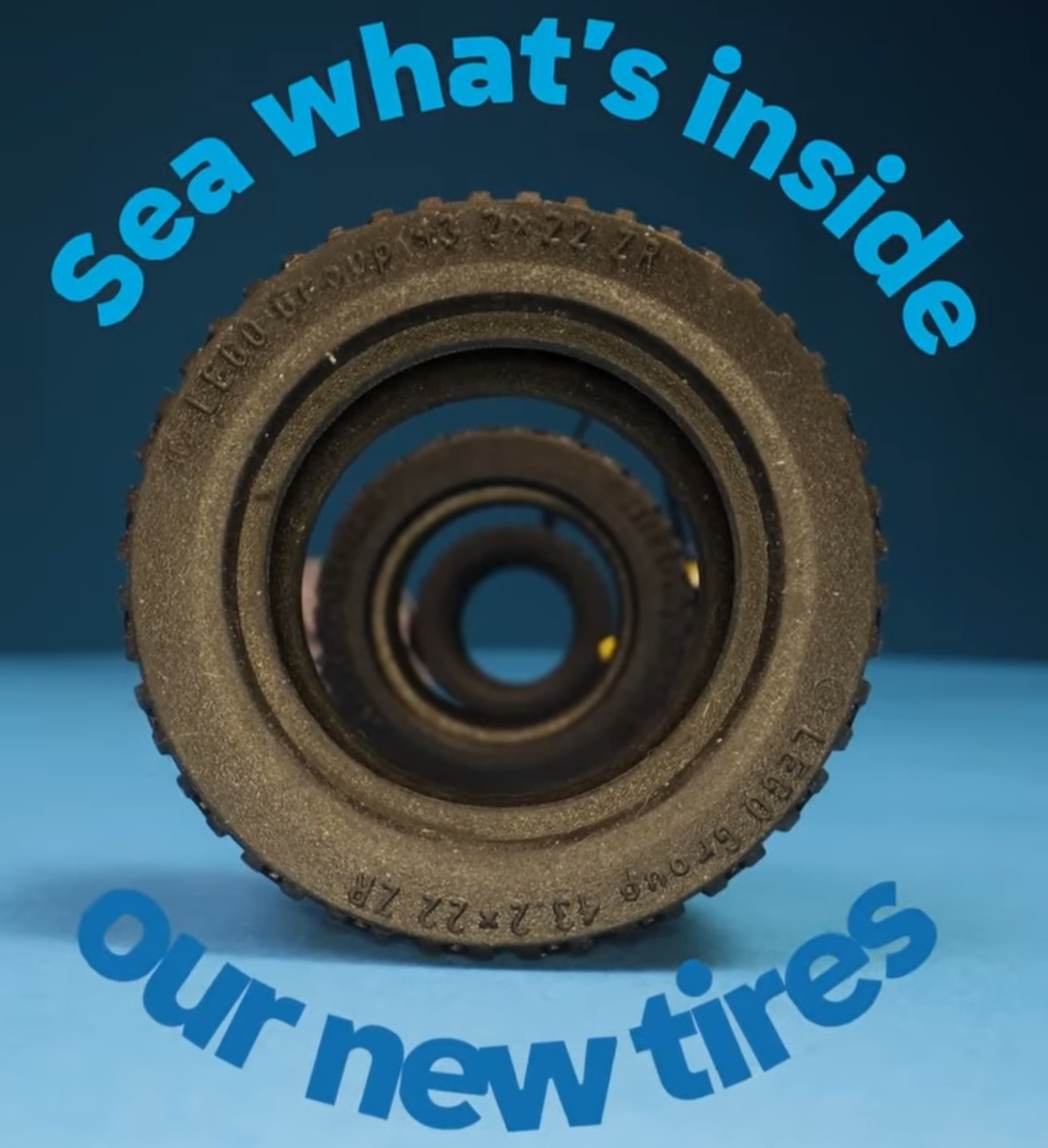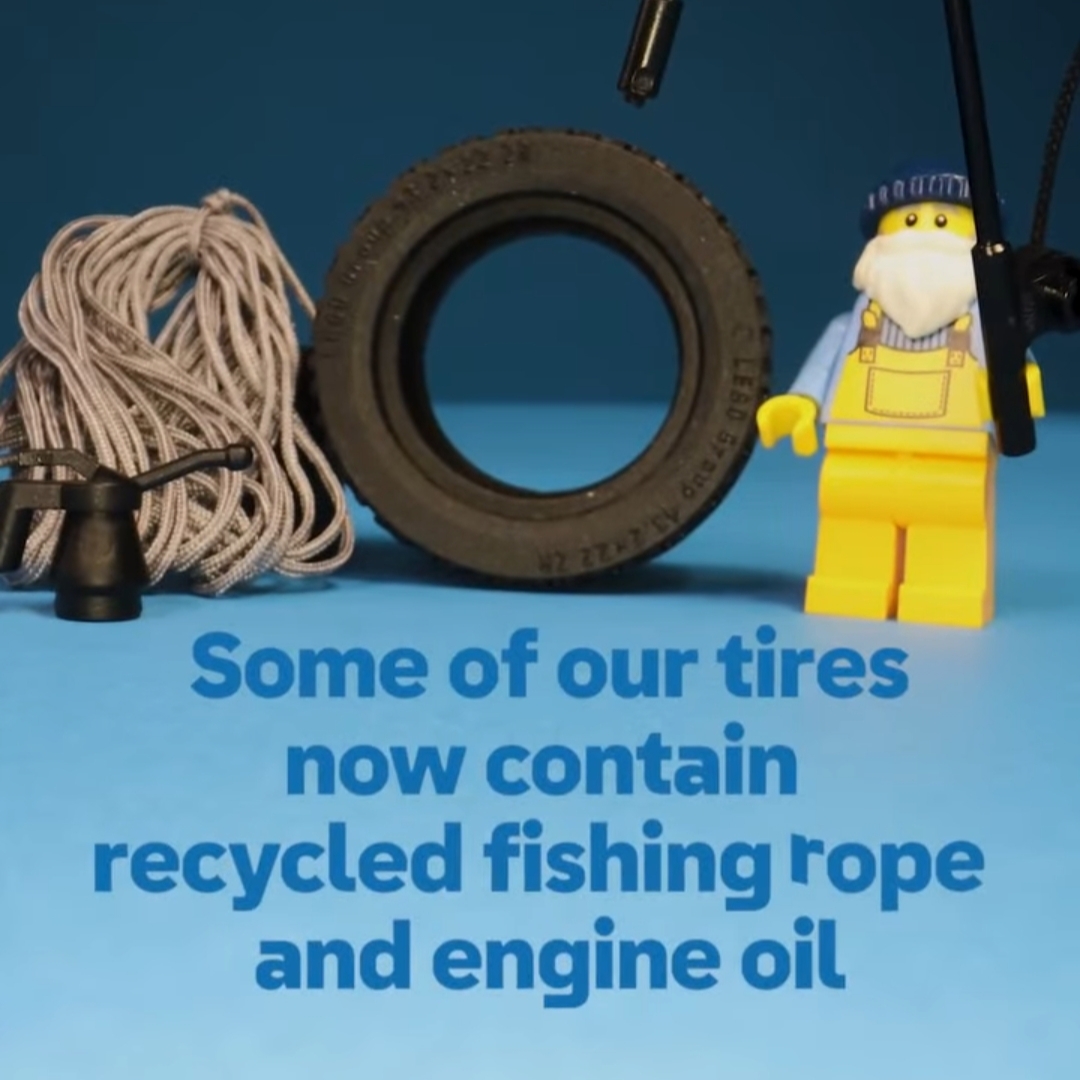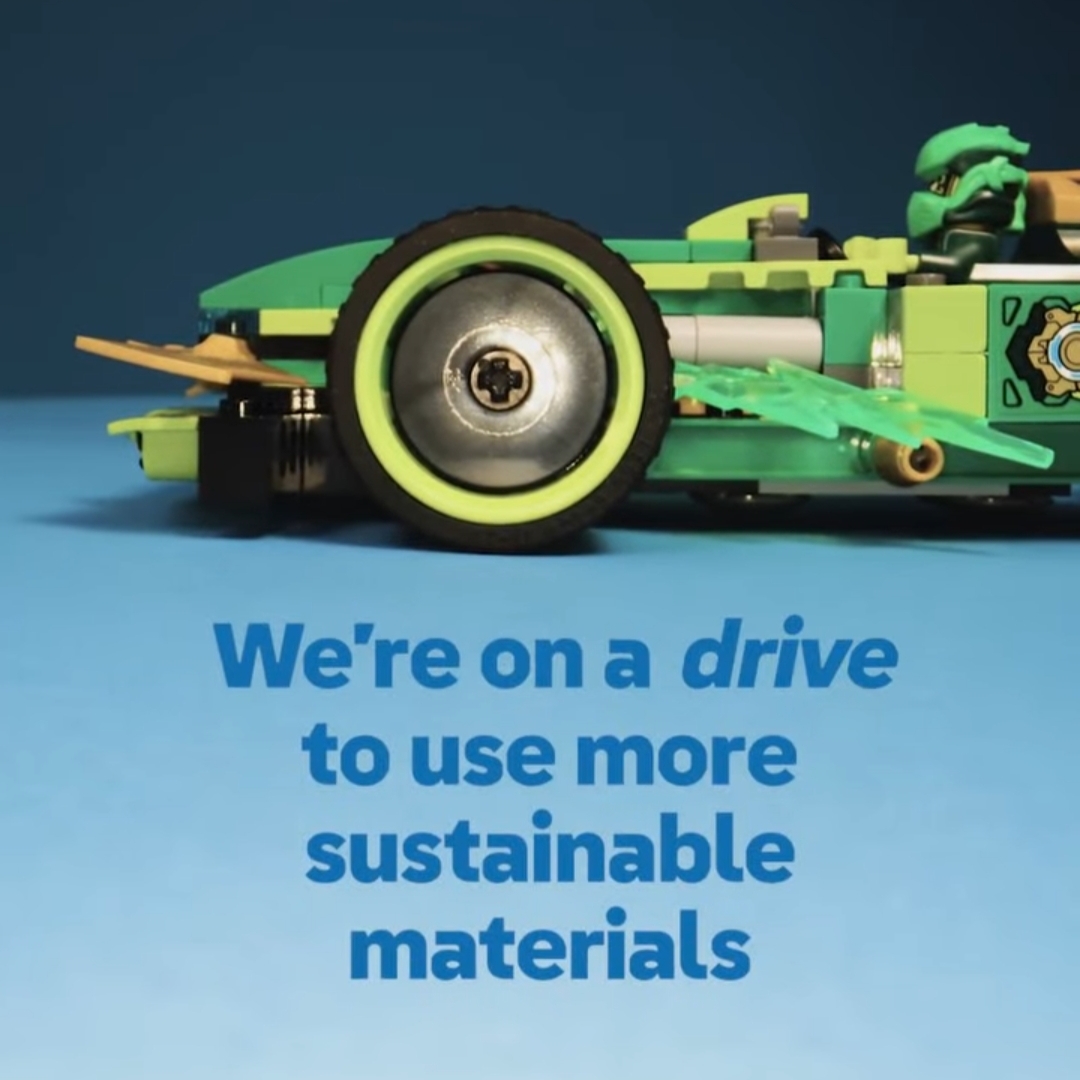LEGO is the world’s biggest manufacturer of tyres, today they announced that these elements will now be made from recycled materials!
In an effort to increase their sustainability, LEGO will produce seven tyre elements that will contain 30% recycled materials. How this is achieved is by repurposing discarded fishing ropes & nets combined with recycling engine oil. The ‘rollout‘ of these new recycled material tyres will be gradual and should start appearing in many more sets in the future.
Resd through the press release below and share your thoughts in the comments section.




Official details:
The LEGO Group introduces tires made with recycled materials
The LEGO Group today revealed tires made using over one-third recycled materials sourced from old fishing nets, ropes and engine oil.
These new tires are already featured in select LEGO® sets, with a full transition planned for later this year.
This development marks another step on the journey towards the LEGO Group’s ambition of making its products from more renewable and recycled materials by 2032.
BILLUND, DENMARK, 26 February, 2025: The LEGO Group today announced the introduction of a new, more sustainable material for selected LEGO tires, made from recycled fishing nets, ropes, and engine oil.
The material is created by repurposing discarded ropes and nets from ocean vessels which is then combined with recycled engine oil to reduce reliance of virgin fossil fuel-based ingredients.
It will initially be used in seven LEGO tire pieces, each containing at least 30% recycled content. The new tires have already started appearing in LEGO sets— indistinguishable from existing tires fans know and love. The company expects these new tires to be used in approximately 120 different sets by the end of 2025 and plans to explore ways to expand recycled content across more tire styles in the near future.
Chief Sustainability Officer Annette Stube said: “This is an exciting step in our ambition to make LEGO products more sustainable and reduce our dependence on virgin fossil fuels. Over the past five years, we have invested significant time in developing and testing this new recycled material to ensure it meets our high standards for quality, safety, and durability. The tires are just one of many options we’re working on to make our products more sustainable and it’s encouraging to see something this innovative making it into our sets.”
The journey towards more sustainable products
The introduction of this material, known as rSEBS*, is part of the company’s broader efforts to make LEGO Group bricks and packaging from more sustainable materials. There is no single solution to the challenges of sustainability, which is why the company is exploring a range of solutions to reduce its environmental footprint and make its products from more renewable and recycled materials. To date, the LEGO Group has tested over 600 different materials for its bricks and elements.
Key initiatives include:
- Bio-polyethylene (bio-PE) – Since 2018, the company has used bio-PE, a soft, durable, and flexible plastic made using Brazilian sugarcane, for certain LEGO elements such as minifigure accessories and botanical pieces. Today, more than 200 elements are made from bio-PE, with over half of LEGO sets containing at least one of these sustainable components.
- Recycled artificial marble (arMABS) – As of 2024, transparent LEGO elements—including lightsabres, windscreens, and windows—contain 20% recycled material derived from artificial marble, commonly used in kitchen worktops. The LEGO Group produces over 900 different arMABS elements, which, once fully transitioned, will feature in more than 85% of LEGO sets.
- e-Methanol and ePOM – The LEGO Group is collaborating with industry partners to purchase e-methanol, a material produced by blending renewable energy with CO2 from bio-waste. This innovative material will be used to produce ePOM, which is expected to debut in select LEGO elements, including wheel axles, in the near future.
The LEGO Group is committed to transforming the raw materials used in its bricks. By the second half of 2024, 30% of all resin purchased by the company was certified according to mass balance principles, representing an estimated average of 22% renewable sources.**
Collaboration for a sustainable future
The LEGO Group recognises that collaboration is key to driving sustainable innovation. The company continues to work closely with suppliers, research institutions, and other industries to develop and refine materials that support the transition to renewable and recycled content. By joining forces with experts across different fields, the LEGO Group aims to accelerate progress towards a more sustainable future for children and future generations.
‘* rSEBS = LEGO SEBS materials are blends of SEBS (which is an abbreviation for styrene-ethylene-butylene-styrene) and other components. The lowercase r indicates some of the components are of mechanically recycled origin.
‘** On 11 March, the company will share its 2024 sustainability statement, including full year mass balance data.
What is your reaction?
 YES!
YES!
 I like it
I like it
 It's OK
It's OK
 Not Sure
Not Sure
 No!
No!




